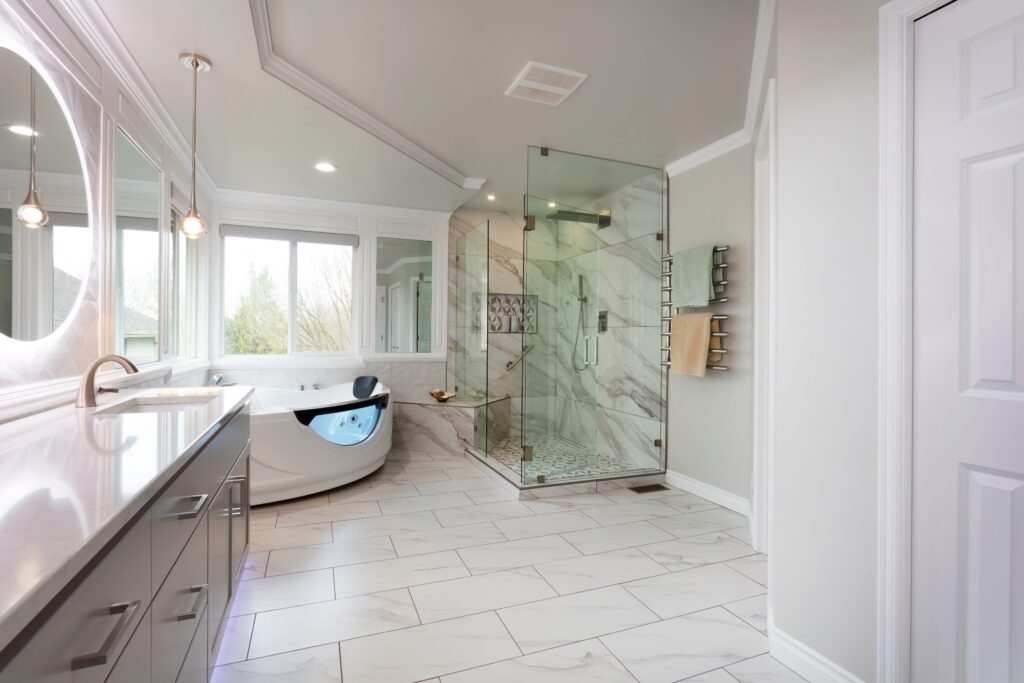Are There Really Free Walk-In Tubs? Understanding Financial Assistance for Walk-In Tub Installation

Installing a walk-in tub can significantly improve safety, accessibility, and comfort for seniors and individuals with mobility challenges. However, the cost of purchasing and installing a walk-in tub can be high. Fortunately, various financial assistance programs exist to help offset these costs, including government grants, loans, and nonprofit programs.
This guide explores available options, including grants for seniors, and provides advice on finding assistance for walk-in tub installation.
Table of Contents
- Government Assistance for Walk-In Tub Installation
- Government Grants for Home Accessibility
- The Reality of “Free” Walk-In Tubs
- Grants and Programs for Accessibility
- Special Focus on Seniors Seeking Assistance
- How to Apply for Financial Assistance for Walk-In Tubs
- Final Recommendations: Managing Expectations
- Additional Walk-In Tub Resources
Government Assistance for Walk-In Tub Installation
Many homeowners are unaware that government programs may assist with the cost of installing a walk-in tub. These programs typically offer support in the form of grants, loans, or subsidies designed to help low- and moderate-income homeowners make essential home improvements.
Walk-in tubs are often considered a safety feature, especially for seniors and individuals with disabilities, which makes them eligible for certain financial aid programs. These programs prioritize accessibility and safety enhancements in the home.
Government Grants for Home Accessibility
Government grants for home repairs often focus on making homes safer and more accessible. Walk-in tubs, as an accessibility feature, may qualify under these programs, especially for seniors or individuals with disabilities.
Programs such as the USDA Rural Development Section 504 Home Repair Program provide grants and loans to help low-income homeowners make critical home improvements. These funds can often be used to install walk-in tubs or similar accessibility modifications.
Additionally, state and local programs may offer funding specifically for aging-in-place upgrades or disability accommodations. Check with your local government for available options.
The Reality of “Free” Walk-In Tubs
While the idea of a “free walk-in tub” is appealing, it’s important to understand that assistance programs rarely cover the full cost of the tub and installation. These programs often reduce the financial burden rather than eliminating it entirely. Some grants, subsidies, and loans can be combined to further offset costs, but having your costs fully covered is exceedingly rare.
Eligibility requirements for these programs can be strict, often based on income, age, or disability status. Many programs prioritize low-income seniors or individuals with specific accessibility needs. Consult your local and regional government offices to see what programs specifically fit you.
Grants and Programs for Accessibility
Walk-in tubs may qualify for funding under programs designed to improve home accessibility and safety. Some of the most common options include:
Veterans Affairs (VA) Programs
Veterans with service-connected disabilities may qualify for financial assistance to install walk-in tubs through VA programs like the Specially Adapted Housing (SAH) Grant or the Home Improvements and Structural Alterations (HISA) Grant.
Medicaid Waivers
In some states, Medicaid Home and Community-Based Services (HCBS) waivers may provide financial assistance for walk-in tubs, especially if they are considered medically necessary.
Area Agencies on Aging (AAA)
Local Area Agencies on Aging may offer programs or direct homeowners to grants and resources for installing walk-in tubs. These agencies often focus on helping seniors age in place safely.
State Assistive Technology Programs
Many states have assistive technology programs that provide financial aid or low-interest loans for home modifications, including walk-in tubs.
Special Focus on Seniors Seeking Assistance
Seniors often face financial challenges, and making home modifications, such as installing a walk-in tub, can be difficult. Fortunately, several programs are designed specifically to help older adults make essential upgrades for safety and accessibility.
Weatherization Assistance Program (WAP)
The U.S. Department of Energy’s Weatherization Assistance Program may help low-income seniors improve their homes, including addressing issues like unsafe bathrooms or installing walk-in tubs.
Nonprofit Organizations
Organizations such as Rebuilding Together and Habitat for Humanity may also provide support for walk-in tub installations as part of their mission to help seniors and low-income homeowners.
How to Apply for Financial Assistance for Walk-In Tubs
If you’re considering installing a walk-in tub, follow these steps to explore financial assistance options:
- Research Local Programs
Start by contacting your local government to inquire about grants or low-interest loan programs for accessibility upgrades. - Consult State and Federal Resources
Programs like the USDA’s Section 504 Repair Program, HUD’s Home Investment Partnerships Program, or Medicaid waivers can provide funding for walk-in tubs. - Explore Veteran Assistance
If you or a family member is a veteran, check with the VA for grants and loans specifically for home accessibility improvements. - Work with a Housing Counselor
A housing counselor or home improvement specialist can guide you through the application process and help identify programs that fit your needs. - Understand Program Requirements
Make sure to review the terms and conditions of any grant or loan program to ensure you meet eligibility criteria and understand repayment obligations if applicable.
Final Recommendations: Managing Expectations
While financial assistance for walk-in tubs is available, it is not guaranteed, and programs are often limited in funding and scope. Eligibility requirements can be strict, and funding availability varies by location and program priorities. Bottom line, nothing is free. You can often combine any assistance you are able to seek out, depending on your circumstances, but even combined assistance rarely fully offsets costs.
For the most accurate and up-to-date information, reach out to local and regional government offices, as well as nonprofit organizations. A walk-in tub can make a significant difference in safety and comfort, especially for seniors and individuals with mobility challenges, but securing financial assistance requires persistence, research, and a clear understanding of the process.
By exploring all available options, you can reduce the cost of installing a walk-in tub and make your home safer and more accessible.
Additional Walk-In Tub Resources

Anna has over six years of experience in the home services and journalism industries and serves as the Content Manager at MyHomePros.com, specializing in making complex home improvement topics like HVAC, roofing, and plumbing accessible to all. With a bachelor’s degree in journalism from Auburn University, she excels in crafting localized, comprehensive guides that cater to homeowners’ unique needs. Living on both coasts of the United States has equipped her with a distinctive perspective, fueling her passion for turning any house into a cherished home through informed, personalized decision-making.








